The untracked world of liquid detergent use
Proactive monitoring of commercial washers' auto-dosing detergent pumps helps to prevent delays, damage, and downtime.
Proactive monitoring of commercial washers' auto-dosing detergent pumps helps to prevent delays, damage, and downtime.
While laundry detergents are mostly discussed in domestic terms, they're just as important in the commercial context, serving a range of industries such as hospitals, restaurants, and hotels. Commercial washers operate on a much larger scale, washing heavier loads of up to 100kg at faster speeds, which consume more water and energy. Selecting the right type and amount of detergent is more critical in these industries, which is why auto-dosing pumps that feed accurate amounts of detergent have become an industry standard.
Although these pumps make operations more efficient, the plastic canisters that hold the variety of detergents are not monitored which can lead to poor stock management and potentially dispensing the wrong amounts, if the detergent runs out. Ultimately, this can create significant delays, and worse, ruin a customer’s laundry. Current liquid level monitoring solutions are incompatible with the viscous, corrosive liquid; and furthermore, non-contact sensors like ultrasound are not scalable for the number of bottles deployed. An easy-to-install, economical, and accurate liquid level sensing solution for monitoring detergent levels is needed.
The global liquid detergent market, where laundry detergents hold the largest market share, was valued at over US$27B in 2017 and is projected to reach US$40.5B by 2025.
The global washing machine market is valued at US$23B. Of this, the commercial sector captures over 45% of market revenue.
In the US in 2022, there were over 2,500 industrial laundry businesses for linen alone and 18,264 laundromats.
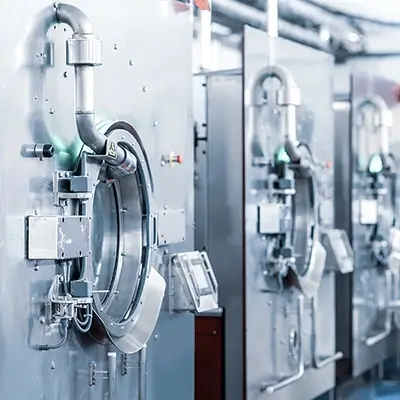
As commercial laundry machines process greater loads, their initial costs are significantly higher ranging from US$800 - $100K, as opposed to the average domestic machine at around US$1,000. The robust and larger drummed machines are therefore more suited for a wide range of commercial sectors that regularly need large volumes of laundry processed to a higher standard. These sectors include hotels, schools, hospitals, restaurants, laundromats, cruise ships, care homes, the military, and some manufacturing plants. These sectors’ dependence on commercial laundry services has thus all contributed to the strong market growth of commercial detergents.
In the commercial laundry market, machines mostly use liquid consumables (not powder) for their better cleaning ability and easier management. One piece of equipment that has become essential for detergent management is an auto-dosing system. The auto-doser guarantees that the exact amount of laundry liquid is dispensed every time, mitigating the wastage from staff errors and spillages whilst also saving time.
North America has the largest share of the commercial laundry market due to the high numbers of healthcare facilities in the US and Canada. Additionally, in the liquid detergent market, North America has matured with the largest share and a high product consumption. The Asia Pacific region is projected to see strong growth in both commercial laundry and liquid detergents from rapid urbanization, which has increased the number of hotels, restaurants, and household income for washing machines.
Key market players for the global commercial laundry market include Jon-Don LLC, LG Electronics, Appliance Laundry Systems LLC, Electrolux Group, and ECOLAB. In the liquid detergent market, this includes Procter & Gamble, Church & Dwight, Henkel Company KGaA, Unilever Plc, S. C. Johnson & Son, Inc Amway Corporation, Reckitt Benckiser Group plc, Colgate-Palmolive, and The Clorox Company.
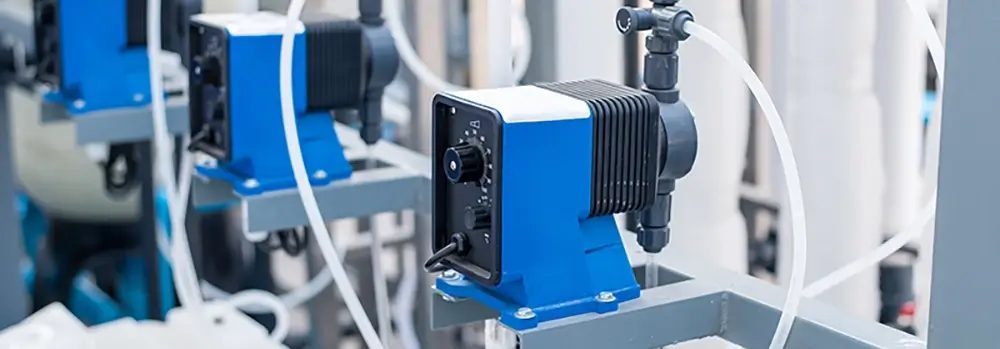
Depending on the scale of commercial laundry, the detergent is usually delivered in bulk containers like drums or IBC totes that are split into smaller dispensing systems. In some cases the detergent containers can be directly attached to auto-dosing pumps ready for operation. These detergent containers are usually made from HDPE plastic and are around 10-20L in volume. Whether detergent is placed into an auto-dosing machine or dispensed by operating staff, detergent stock management is still done manually.
Checking stock manually can be complicated as commercial laundry companies use several variations of detergent, which depends on the customer - whether a whitening, conditioning, disinfection, or low-temperature service is needed. More importantly, detergent bottles are usually opaque to preserve their chemical stability so inspection cannot be done easily by eye. Exact amounts of detergent will also vary per wash, meaning the rate of detergent consumption cannot be easily predicted.
Manual checking may therefore miss when machines run out of detergent which will cause delays in the bottle changeover, especially when spare stock has run out. A lack of detergent during a wash can also damage the current load incurring extra costs for the laundry service.
Having an automatic level measuring sensor will guarantee that stock levels can be maintained and always ordered in advance before the stock has run out. Optimizing detergent inventory in this way will also mean excess stock will not be unnecessarily ordered until needed. However, this opportunity has not yet been addressed with current liquid-level sensors.
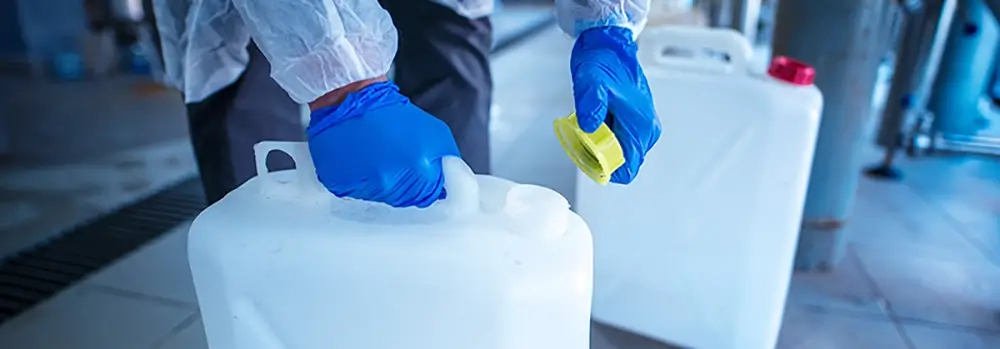
Liquid level sensors aim to measure the liquid height in a container or act as a gauge to tell when the container is empty. Types of contact sensors use conductive, resistive, or float switch mechanisms to measure liquid levels. However, these are not likely to work because of the detergent’s viscosity and corrosiveness which will obscure results or damage sensors over time.
Non-contact liquid level sensors are an alternative type that do not rely on any mechanism touching the detergent. These include capacitive, ultrasonic, and radar sensors. While capacitive sensors are usually placed on the side of the container, ultrasonic, and radar sensors are usually placed on top and measure the distance towards the top of the liquid. Both radar and ultrasonic sensors are very accurate in reading levels but radar sensors are favored because of their ability to measure through foam and condensation.
Most liquid level sensors are used in critical industrial applications to measure large tanks of liquids so costly technology like ultrasonic and radar sensors can be economically viable. However, these technologies are not scalable for both cost and installation in the context of detergent bottles that may require tens of containers on site. An easy-to-install, low-cost, and accurate liquid level sensor is needed for efficient detergent stock management.
LAIIER’s solution for commercial washers: A cost-effective, easy-to-install liquid-level sensor
To address these shortcomings, LAIIER has developed a non-contact liquid level sensor that can be applied like a sticker to the outer surface of detergent bottles. Due to the innovative use of printed inks, the sensor can be cost-effectively manufactured to be installed on however many detergent bottles are required, so can be easily scaled. Additionally, all of LAIIER’s sensors are connected to our Surface to Cloud™ platform via LoRaWAN® technology so devices can promptly notify service operators of any stock actions required.
Early insights into stock levels can guarantee operators have washing machines in operation without out-of-stock conditions or surplus stock.
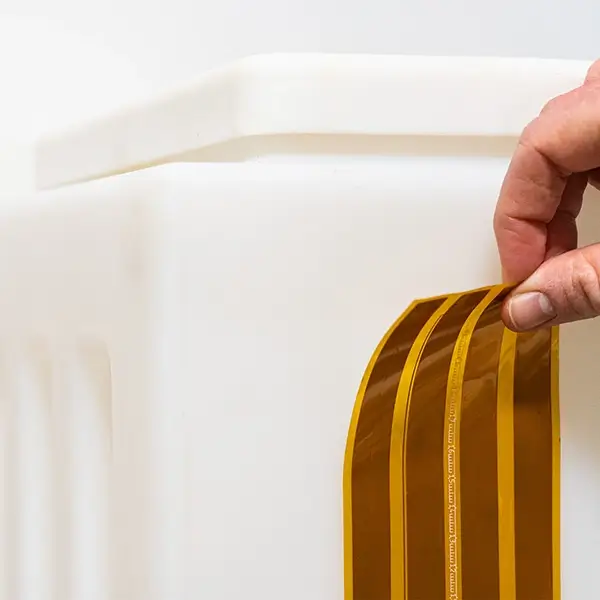
As commercial laundry services mostly use automatic dosing equipment, not automatically tracking detergent levels reveals an obvious inefficiency. With LAIIER’s liquid level sensor, detergent stock management is automatically tracked so managers are well-informed with how much detergent should be procured. LAIIER’s liquid level sensor not only optimizes stock levels but saves staff member’s time and reduces the need to stand closely to dangerous machinery. This is especially the case for tunnel washers which are the largest type of commercial laundry machine, washing up to 265 pounds per load. At this scale, delays and the chance of incorrectly washing fabrics are even costlier.
Aside from laundry companies, the detergent manufacturers who supply the range of products would highly benefit from tracking their customers' detergent use. If the low-cost sensor is installed as part of the packaging, detergent bottles can be tracked so when stock levels are low, detergent can be automatically ordered from the detergent supplier. This creates a fluid business model benefitting suppliers with regular orders and customers with optimized stock levels.
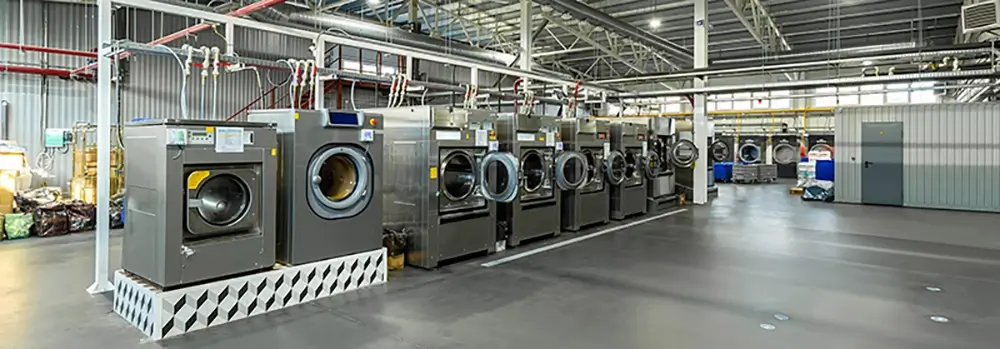
The commercial laundry market is a crucial aspect of many industries in our society, where laundry must be carefully washed with the right type and amounts of detergent. Whilst the throughput of these facilities can be on an industrial scale, one evident pitfall is the lack of detergent stock monitoring which can lead to unpredictable out-of-stock conditions.
Current liquid level sensors are not suitably designed for detergent bottles as they are too costly or incompatible with the detergent’s chemical properties. However, at LAIIER we have designed a low-cost, scalable liquid level sensor that can effectively measure detergent levels. Taking a proactive approach to stock management is essential in the growing commercial laundry market.